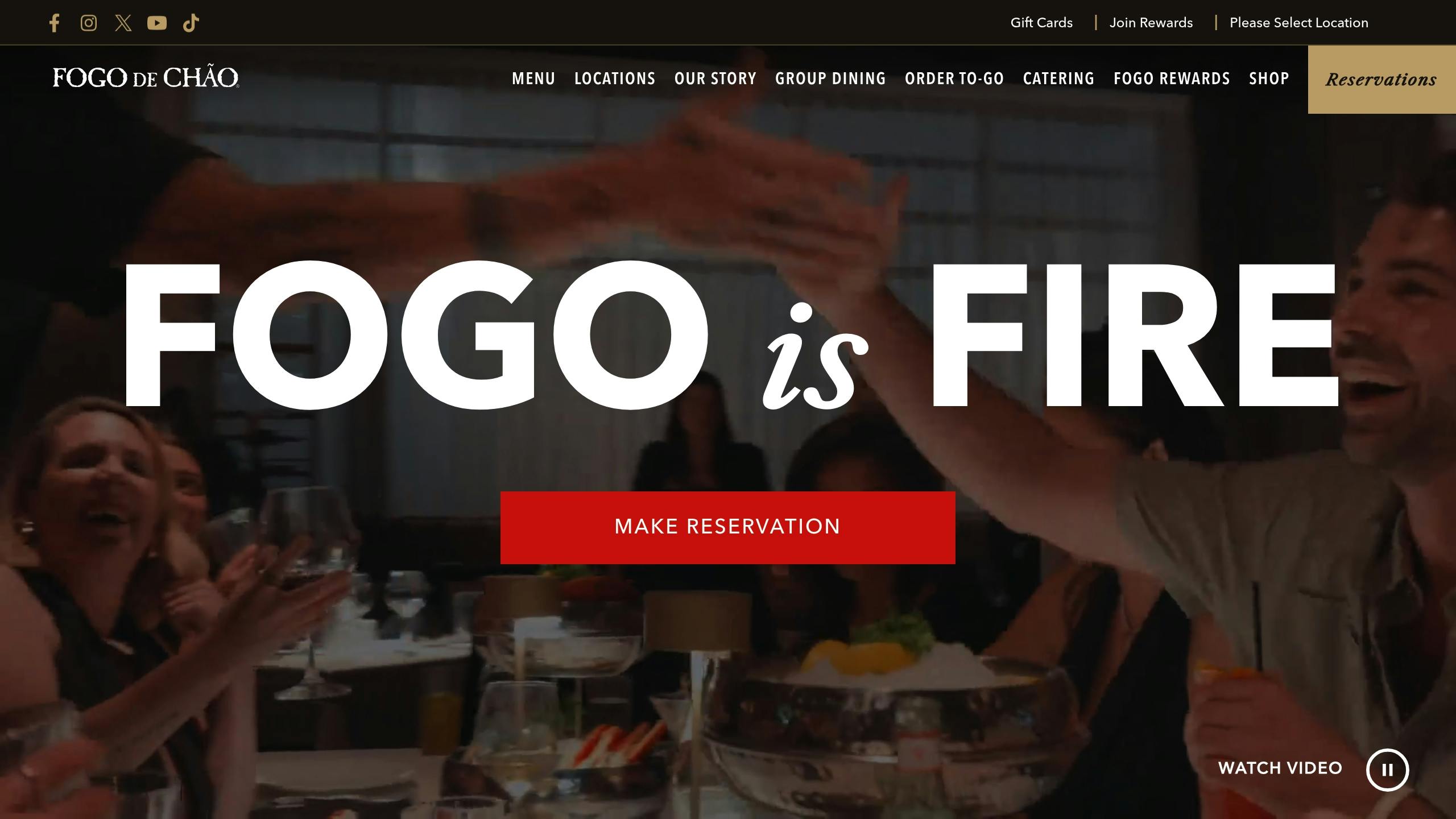Eating out with food allergies in NYC steakhouses can be safe and enjoyable if you plan ahead and communicate clearly. Here's how to do it:
- Research the Restaurant: Check menus online for allergens, ingredient details, and allergy policies.
- Communicate Early: Mention your allergies when making reservations and confirm with staff upon arrival.
- Ask the Right Questions: Inquire about cross-contamination, ingredient lists, and kitchen practices.
- Use Allergy Cards: Share a written card with your allergens and emergency details to ensure clarity.
- Emergency Preparedness: Always carry your medication and have a plan in case of a reaction.
Food Allergies at Steakhouses
Common Allergens in Steakhouse Meals
Steakhouse dishes may contain hidden allergens in their seasonings, sauces, and cooking methods. Here's a quick look at some common allergens you might encounter:
| Menu Item Category | Potential Allergens |
|---|---|
| Steak Preparations | Dairy (butter used for finishing), Soy (in marinades), Wheat (seasoning blends) |
| Side Dishes | Dairy (cream, cheese), Tree nuts (used as garnishes), Gluten (breadcrumbs) |
| Sauces & Marinades | Eggs (found in béarnaise), Fish (anchovies in Worcestershire sauce), Soy (common in steak sauces) |
| Appetizers | Seafood (due to shared fryers), Gluten (breading), Dairy (in dips) |
Understanding these potential allergens can help you navigate the menu more safely.
Clear Communication with Staff
Once you know what to watch out for, it's crucial to communicate your needs clearly to the restaurant staff. Here's how to make sure your allergies are taken seriously:
- Let the host know about your allergies when making a reservation.
- Inform your server as soon as you're seated.
- If your allergies are severe, ask to speak directly with the chef or kitchen manager.
- Double-check your order when it arrives, focusing on:
- Specific allergens to avoid
- Concerns about cross-contamination
- Any special preparation instructions
- How severe your allergic reactions can be
These steps can make dining out safer and more enjoyable.
Finding Allergy-Safe NYC Steakhouses
Tips for Using NY Steakhouse Guide

While the NY Steakhouse Guide doesn't include a specific allergy filter, you can still find suitable options by carefully reviewing restaurant profiles. Here's how:
- Use filters for location and dining style to narrow your search.
- Check profiles for notes about cross-contamination prevention.
- Read reviews to see if others mention allergy accommodations.
After identifying potential spots, dive into their menus to gather detailed allergen information.
Researching Menus Before Your Visit
To ensure a safe dining experience, take time to analyze the menu and learn about the restaurant's allergy protocols.
Key steps to follow:
| Step | What to Look For |
|---|---|
| Menu Details | Ingredient lists, allergen icons, modification options, downloadable menus |
| Kitchen Practices | Use of separate prep areas and dedicated equipment |
| Staff Training | Knowledge of food allergy safety |
| Allergen Policies | Written guidelines or ingredient matrices |
- Check how the restaurant handles cooking oils, marinades, and shared equipment to reduce allergen risks.
- Download menus, if available, to review all ingredients and allergen details.
- Contact the restaurant directly to ask about their food allergy safety measures or certifications.
Restaurant Review: Fogo De Chao

sbb-itb-e6be165
Making Allergy-Safe Reservations
When booking a table, it's important to communicate your food allergies clearly so the kitchen can prepare safely. Here are some tips to make the reservation process easier.
Tips for Phone Reservations
If you're reserving by phone, mention your allergies right away. Be specific about the allergens (e.g., "I have a severe shellfish allergy and need meals prepared without any cross-contact") and ensure this information is recorded with your reservation.
Helpful steps for phone reservations:
- Start the call by stating your allergies
- Clearly explain the allergens and how severe your reactions are
- Confirm that your allergies are noted in the reservation system
Questions to Ask About Allergy Safety
During the call, ask these questions to make sure the restaurant can accommodate your needs:
- What steps does your kitchen take to avoid cross-contact?
- Are staff members trained to handle food allergies?
- Can menu items be adjusted to meet allergen restrictions?
- Is there a way to review ingredient lists for the dishes I choose?
- What is the protocol if an allergic reaction occurs?
Dining Safety at the Restaurant
Communicating Allergies On-Site
When you arrive, let the host know about your allergy needs. It's a good idea to speak directly with your server and, if possible, the chef or kitchen manager about your dietary restrictions.
Here’s what to do once seated:
- Show any medical alert jewelry to your server.
- Double-check your order details, including how the food is prepared and the ingredients used.
- Confirm garnishes and sides to ensure there are no hidden allergens.
Using Written Allergy Cards
Carrying an allergy card can make communication with restaurant staff much smoother. Create a small, clear card that includes:
- Your name and specific allergens
- How severe your allergies are
- Cross-contamination risks to avoid
- Emergency contact details
Hand a copy to your server and request that it be shared with the kitchen staff. Keep one for yourself, too, to ensure everyone involved in preparing and serving your meal is informed.
It’s also wise to stay ready for emergencies to make dining out as safe as possible.
Preparing for Emergencies
Even after confirming your dietary needs, having an emergency plan in place is crucial.
1. Before Dining Out
Ensure your emergency medication is easy to access and hasn’t expired.
2. While at the Restaurant
Choose a seat near an exit. Make sure at least one person in your group knows:
- Where your emergency medication is kept.
- How to use your auto-injector.
- When to call for emergency help.
3. If a Reaction Happens
React quickly to any symptoms:
- Use your auto-injector if needed.
- Call 911 or have someone call for you.
- Notify restaurant staff so they can assist emergency responders.
- If possible, save a sample of the food for later testing.
Tip: Even if symptoms seem minor, don’t hesitate to use your emergency medication. It’s always better to act quickly when dealing with food allergies.
Conclusion
Eating out with food allergies requires planning and clear communication. Thankfully, many NYC steakhouses are now more attentive to accommodating dietary needs.
Preparation makes all the difference. Check menus ahead of time, confirm allergy procedures when making reservations, and always have your emergency medication and an allergy card on hand. Many steakhouses are equipped to handle allergy-related requests.
Clear communication is equally important. Whether you're making a reservation or speaking with staff at the restaurant, being upfront about your needs can help create a safer and more enjoyable dining experience. Use these tips whenever you eat out to prioritize both safety and enjoyment. For extra guidance, the NY Steakhouse Guide can help you find restaurants that are mindful of allergy concerns.


